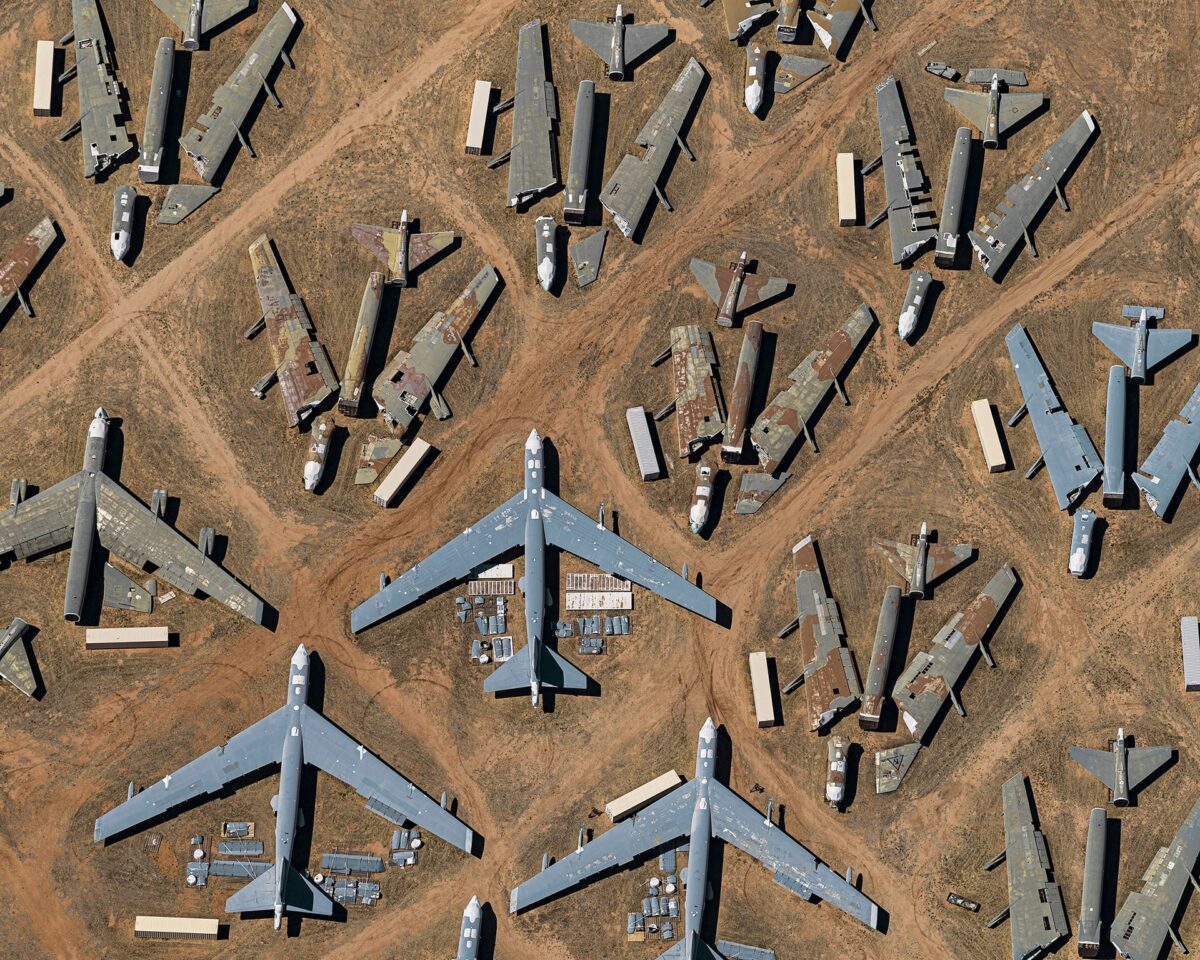Dotted in remote locations around the world are aeroplane boneyards: sites where retired aircraft are kept for storage, maintenance, scrap, or simply to slowly rust until the end of time. But knowing that there are hundreds, sometimes thousands of planes parked up and going nowhere begs an obvious question: why can’t I just saunter in and take one? Well, turns out there are a few reasons, and some are more sinister than others…
For as long as planes have existed, humankind has invested a lot of time and energy into producing as many high-quality aircraft as humanly possible, both for commercial and military means amongst other things.
Since the early 20th century, the USA’s funding for its Air Force has been in the tens of billions per year, currently sitting at a plump US$156 billion per annum. Though never quite catching up with the US’ mega-military, other major powers have followed a similarly enthusiastic strategy.
When commercial vehicles are taken into consideration too, estimates suggest that around 40,000 planes are currently in use today, with over 150,000 planes existing across human history.
All these figures are approximate, but they exist to support a more general point: there are a lot of planes in this world and, like all things, they eventually reach the end of their useful life. So what happens to them then?
That’s where plane boneyards come into play. These are vast swathes of land that are given over to housing retired aircraft. Usually located in remote locations like the American dessert or Australian outback, the planes are neatly set down in rows before being given over to one of a few different fates: repair and redeployment, breaking down for parts, or plain old deterioration.
So you might be wondering: if all these aircraft are just sitting there, doing nothing at all, why shouldn’t you just pack a bag, head on in, and take one for yourself? Well, there are a few good reasons, which we’ll take you through now.
Let’s take the Davis Monthan Boneyard in Tuscon, USA – and a helpful anecdote from Terrence Kanzig – as an instructive example:

The first reason you’ll struggle to steal one is the presence of a “serious keep-the-hell-out fence”. Indeed, the only way to see these vehicles is to take a paid-for bus tour around the compound, even if you’re ex-military. From here you can see noteworthy aircraft and take some nice pictures… from the bus. No one is allowed up close.
But why? As mentioned, some are destined for better things: either fixing up and shipping out or, as is usually the case with older aircraft from the Korean or Vietnam conflicts, to be stripped down to fuselage and sold off for parts.
However, there may be more to these boneyards than meets the eye. Some boneyards have a “secure area within the secure area” where more highly confidential research is carried out on retired craft. Kanzig claims this might have something to do with the SALT (Strategic Arms Limitation Talks) treaties established in the 1970s and 80s.
In short, when it comes to the USA the main reason you can’t steal a plane from a boneyard is that the military really doesn’t want you to. They built those planes, they want to keep those planes, and we reckon they’d go to pretty much any length to stop you from stealing one of those planes… You have been warned.
However, there may also be some slightly more humanitarian reasons for not nabbing one of these planes, particularly in the case of one Bangkok boneyard.
Here, impoverished families actually live inside the rusting fuselages, making a living by slowly scrapping down the planes themselves.
With the city centre’s towering skyscrapers looming in the background, the site of poverty-stricken families eeking out a living amongst the burnt-out aircraft – usually commercial liners, in his instance – makes for an acutely eerie setting.

The aircraft have already been stripped of all their truly valuable parts before being decommissioned, so the families here are only able to make a few dollars a day by selling off the remaining basic parts.
What’s more is that all the windows are also removed before decommissioning, so much of the “resident’s” time is spent finding materials to make the planes watertight again, just so they can stay dry during the country’s furious wet season.
Thailand, and Bangkok in particular, has had a long-standing issue with homelessness and poverty. The capital city is home to more than 1,000 overcrowded communities or slums. Official estimates suggest that there are around 1,800 homeless in the city (with a 30% increase seen during the pandemic) but this number could actually be far higher.
So there’s another obvious reason why you can’t steal a plane from a boneyard: somebody might already be using it – and chances are, they need it a lot more than you do.
Here, we return to Terrence Kanzig, who makes a perceptive comment that might reframe your nascent heist plans:“With all the security and aircraft preparation [required] it would be foolish to even think about breaking in and stealing an aircraft. If you’re smart enough to break in, prep the aircraft, fuel it and fly it, then you’re probably a stable genius who should work your way up to a zillion-dollar-a-year CEO position of some major corporation and just buy your own plane instead.”
Terrence Kanzig, Quora
Good point well made, Terrence. Failing your “zillion-dollar-a-year” career trajectory, you could always see if the Tinder Swindler’s rent-a-jet is available…
The post Aircraft Theft From Plane Boneyards Is Much Harder Than You Think appeared first on DMARGE.


0 Commentaires